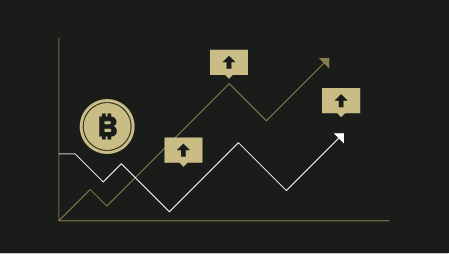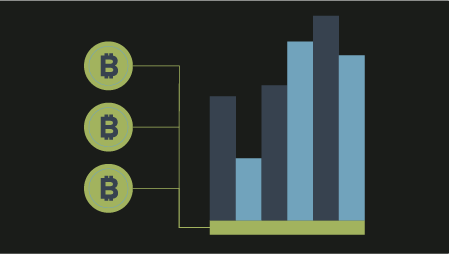Ready to learn Blockchain? Browse courses like Blockchain for Finance Professionals developed by industry thought leaders and Experfy in Harvard Innovation Lab.
In Part One of this series, we discussed various approaches to achieving traceability as the foundation for provenance assurance and recall. This included a discussion of the impact of FSMA, industry standards, and networked SaaS systems. Here we talk about the capabilities required for improving freshness and HACCP processes and standards to ensure safety.
Freshness and Safety
Data/Capabilities Required for Improving Freshness
Arguably the most valuable improvements for the produce supply chain come from increasing freshness and safety. Growers and retailers are always looking to reduce waste and spoilage in the supply chain and provide produce that has a longer post-purchase shelf life, with superior freshness. Improving freshness and reducing spoilage requires a number of additional data elements and capabilities, beyond those needed for traceability for provenance and recall:
- End-to-end temperature monitoring—Continuous tracking of the temperature of each pallet or case of product, starting at the point of harvest in the field all the way through delivery at the retail store. Without this information, accurate remaining freshness cannot be calculated.
- Condition-based Expiration Date—Based on the temperature exposure history of a given pallet of produce, a precise expiration date can be calculated that is much more accurate than the average
shelf-life estimates based purely on days-since-harvest, that don’t take into account the temperature exposure history of the pallet. - Temperature Response Profiles—A model for predicting the Condition-based Expiration Date must be tailored to each produce variety, location, and time of season if it is to have any validity and accuracy. This requires testing and observing how each variety responds when exposed to different temperature histories. Without this, a model can generate only a crude estimate of the remaining shelf life, even if it has the end-to-end temperature history.
- Per Customer/Location Requirements (Transit-time and Days-of-Freshness)—In order to match each pallet to its optimal destination, the system needs to know the transit time and days-of-freshness requirements for each customer order.
- Prescriptive Optimized Logistics (aka Intelligent Routing)—Armed with the above pieces of information—the end-to-end temperature history, an accurate Condition-based Expiration Date, and per customer/location requirements—the system can tell line workers exactly what to do with each pallet or case at each key decision point in the supply chain. This includes local decisions, such as which pallets to put into the precool next, and intersite decisions, such as which pallets to send to which customers.
Intelligent Routing—Matching Remaining Shelf Life to Customer Requirements in Distribution Decisions
For more details on these elements, see Measuring Produce Freshness: Ensuring Delivered Freshness. Without all of these data and capabilities, it is difficult for a system to make a material impact on improving freshness. The only company we’re aware of who has brought all these pieces together is Zest Labs. They automatically collect pallet-level freshness data using wireless temperature tags (which they call ZIPR tags) that farm workers place into each pallet as soon as each pallet is loaded with produce out in the field. The tag starts recording temperature immediately and throughout the end-to-end journey. The system has algorithms to detect delays in turning on the temperature recording device, to ensure that any time spent sitting out in a hot field is included in the temperature record.
The Zest solution generates a Condition-based Expiration Date, which they call the ZIPR Code. This date is dynamically calculated (potentially changing as the pallet is exposed to different temperatures) based on extensive Temperature Response Profiling that Zest has conducted on many varieties of produce for different locations and time-of-harvest. They use AI-based and Machine Learning predictive and prescriptive analytics to dynamically determine freshness and enable prescriptive intelligent routing.
Ensuring Safety
While robust recall capabilities are important, they are reactive after-the-fact measures. Growers, brand owners, and retailers all want to ensure that the proper processes and procedures have been followed, to minimize (or ideally nearly eliminate) the chances of bacterial contamination. It is much better to proactively prevent adverse incidents from happening in the first place. Best practices are well understood and defined in HACCP1 processes and standards. Skipping steps or taking shortcuts in these processes adds risk. The same system used to track provenance and freshness can and should be used to track HACCP test results and ensure that all process steps have been correctly executed.
A large grower or distributor operation may process thousands of pallets per day. During peak harvest season, these facilities are running at full capacity and then some. These are fast-paced environments, where things can go wrong. During peak season, any glitch puts tremendous pressure on the operation—whether it’s a piece of machinery broken, a key employee or two out sick, extra hot weather requiring longer pre-cool times per pallet, or trucks arriving late. Growers and processors will tell you, off-the-record, “When things go wrong and we get slammed, we will always find a way to get food through the system. And during peak season we get slammed every day.” That is one reason it’s so important to validate that HACCP requirements were met.
The Zest solution mentioned above outfits each pallet with a wireless ZIPR tag so that its movements and process steps can be automatically recorded, without requiring the workers to interrupt what they are doing. The system has built-in analytics to ensure that all the right steps have been done, in the right sequence and time, with algorithms to detect gaming of the system. For example, during harvest, pallets in the field are normally built and loaded onto a truck at approximately 10-15 minute intervals, depending on the type of produce and experience of the crew. If someone accidently or intentionally forgets to start recording temperature as soon as each pallet is built, the system will sense too little time between the pressing of the ‘start recording’ button for different pallets from the same field. It will generate an alert/warning to indicate that temperature recording likely was started too late for some or most of those pallets. Similarly, it can detect if the temperature changes too rapidly, an indicator that someone is likely doing something suspect with the temperature sensor, such as putting it in cold water.
Similarly, the system checks that the right sequence has been followed, from field through yard acceptance, precool, and all of the steps. This way it can detect missing steps or meddling. It can also record HACCP processes, such as regular cleaning of the equipment, and results of tests such as lab analysis of the water used to clean any processing equipment that touches the product (such as the blades on a slicer). A positive test result indicating the presence of potentially harmful bacteria will automatically trigger an alert. Since the system has a complete record of where all product has gone, a retrieval can quarantine those pallets, stop them from being sent any further in the supply chain, and potentially pull them back.
With the Zest Fresh system, companies can use their own HACCP standards and processes, combined with the Zest solution, to proactively hold distributed pallets when an event has been detected, as well as record it all in a log accessible to the FDA upon request. Companies can implement their own policies in what to do when specific types of events happen, such as a HACCP step is missed or a test comes back positive. The policy can be implemented in a smart contract or off-chain (more on that below). All of this data (test results, events, etc.) can also be stored in a blockchain if stronger proof of non-tampering is required.
In Part Three of this series, we will cover the types of capabilities blockchain brings to produce supply chains, as well as a discussion of blockchain architecture and the differences between public and permissioned blockchains.
__________________________________________________________________
1 HACCP = Hazard Analysis and Critical Control Points, a systematic preventative approach to food safety.





